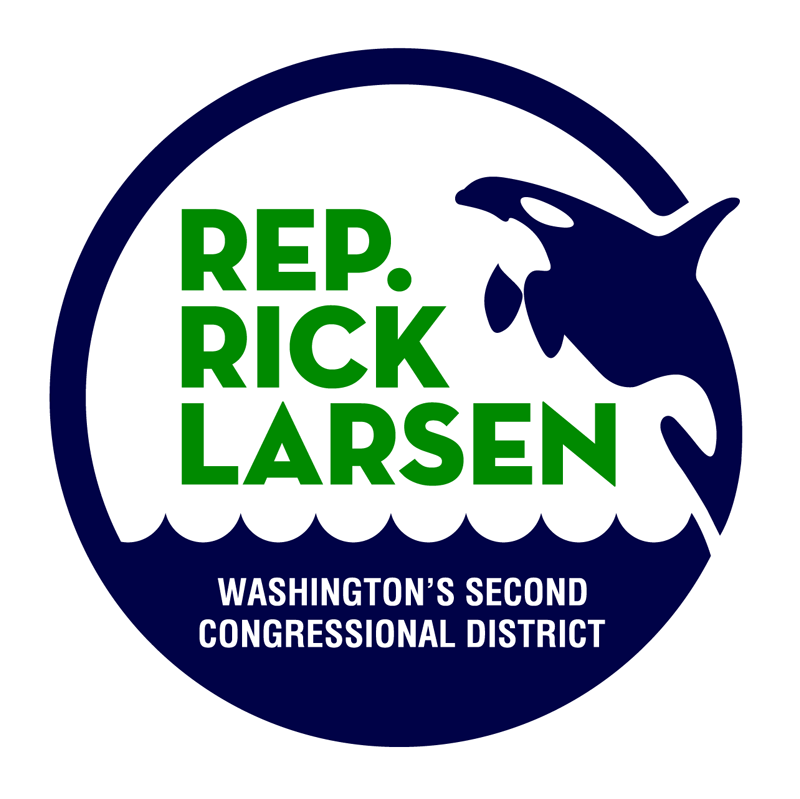Press Releases
Larsen Fights For PNW Priorities In Transportation Bill
Washington, DC,
October 22, 2015
Rep. Rick Larsen, WA-02, today joined with his colleagues on the House Transportation and Infrastructure Committee to advance a long-term transportation bill to the full House for consideration. Larsen issued the following statement about his support for the Surface Transportation Reauthorization and Reform Act of 2015 (H.R. 3763), a bill that included his language to improve financial accountability for ferry boat funding, which could help the ferry system in Washington state . “My top priority is creating jobs and investing in the foundation of long-term economic growth in the Pacific Northwest. One of the best ways I know to accomplish these goals is to build and repair our roads, bridges, highways and transit systems. We cannot have a big league economy with little league infrastructure. That is why I have worked so hard to move a long-term transportation bill forward. “The Surface Transportation Reauthorization and Reform Act of 2015 is an important step toward ensuring cities, counties and states can count on the transportation funding they need. While I am disappointed the bill does not make a bigger investment overall, a long-term bill will help ensure that businesses can trust in reliable access to markets and citizens can get to work and school safely. “When I talk with transportation stakeholders in Washington state, I hear about the issues they are facing every day. These are the issues I am fighting for in this bill. Our state has the largest public ferry system in the country, and ferries are an extension of our highway system. Thousands of people use ferries every day to get to work, school and medical appointments. The bill includes my language that improves the financial accountability of ferry systems, which will help our ferry system in Washington state. We should be spending taxpayer dollars wisely and in a timely fashion. “Less than 2 percent of federal transportation funding goes to the Transportation Alternatives Program, which funds bike and pedestrian projects. But communities leverage these small funds to get big results by investing in bike lanes, sidewalks and trails. I fought successfully to maintain funding for this program in the bill, and I will keep pushing for strong bike and pedestrian infrastructure. “I am pleased to see this bill commits to doing more to keep communities near rail lines safe. The number of trains carrying crude oil has increased exponentially in recent years. In Northwest Washington, we have gone from zero trains a week to 10 or more in some places. This bill rightly recognizes the need for safety upgrades on railways around the country by including funding that can be used to improve at-grade crossings. The bill does not go as far as my At-Grade Crossing Enhancement Act, but it is an important start. “In Washington state, transportation means jobs. Let’s get this bill done to put people to work and keep our economy moving,” Larsen said. Below is a summary of the transportation programs included in the Surface Transportation Reauthorization and Reform Act of 2015 of particular importance to Washington state. Funding level One of the problems with the bill is that it does not include enough sources of funding to fully pay for itself. While the bill authorizes $325 billion in spending on important surface transportation programs over six years, the only concrete funding source for it is the gas tax. The Congressional Budget Office estimates the gas tax will bring in about $240 billion between 2016 and 2022, leaving a gap that still needs to be fixed. Bridges Bridge safety has long been a priority for Larsen, and this bill makes funding more available for smaller bridges that are not part of the National Highway System. Midsized Cities Midsized cities often have trouble competing for federal transportation grants because they do not have the same resources as larger cities. Larsen had planned to make it easier for midsized cities to access the TIGER Grant program, but the bill does not reauthorize that program. Larsen pressed the committee to continue working to help smaller cities and counties access federal resources for their transportation projects. Ferries Larsen pushed for more financial accountability for ferry boat funding, which could help the ferry system in Washington state. The bill included Larsen’s language to rescind and redistribute money that ferry systems have not used within three years of the allocation. Bike and Pedestrian Infrastructure Larsen has led efforts to maintain funding for a popular program that supports community investments in infrastructure for bicyclists and pedestrians. The bill sustains the Transportation Alternatives Program, which communities use for sidewalks, bike lanes and trails. Rail Safety In response to constituents’ concerns about the safety of crude oil traveling by rail, Larsen has pressed for higher standards for these trains to keep communities safe. He specifically has pushed to direct money to improving rail crossings, where rail incidents are most likely to occur and where rail lines have the highest impact on car traffic. The bill creates new programs that could fund at-grade crossing improvements, including:
### |
